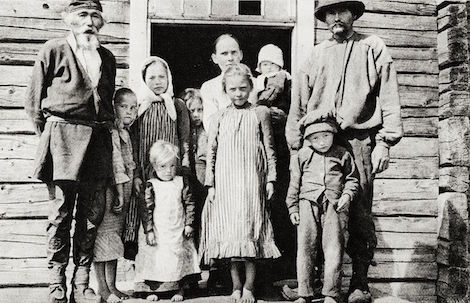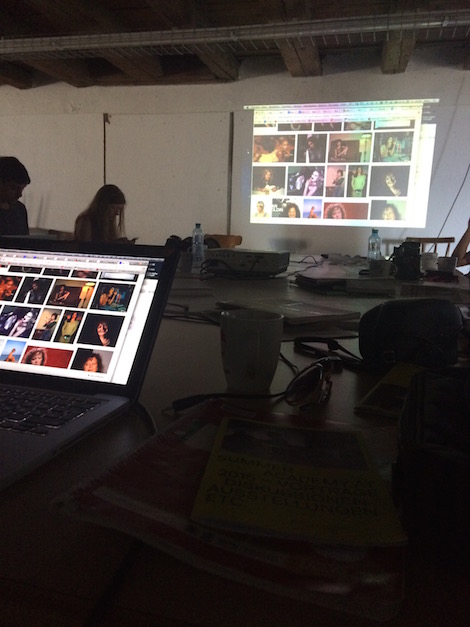| « 20 / 30 Intimate materials | 18 / 30 Halftime – 10 instructions » |
19 / 30 This is how the world is (too / not)
Your name bears the trace of a journey. Maybe, not of a journey that you undertook yourself, but of journey of your parents or grandparents. Almost every family has stories of migration hidden in their names. These overt and covert stories were the point of departure of Tobias Zielony’s photography class on migration.
In the very first session each student had to tell the story of his or her name. If you play this game among your friends, you will realize that migration is taking place all the time and at all times. It has many more faces than the omnipresent pictures of refugees that you see these days in the media. This was one of the aims of Zielony’s class: to create pictures of migration that go beyond the cliché of the migrant. I met Tobias Zielony to talk about teaching, inhibitions and the tasks of documentary.

What is the first thing you do when you meet a new group of students like here in Salzburg?
I really try to get them into working very fast. We used the introduction to ask them for their ideas for projects. It is really important to me that somebody continues from where they already are. This is also how I start my own projects. You always try to advance something that somehow is present already. So that you don’t start with nothing. In that way, I did not give that much input to the group in the beginning. Some people might have thought in the beginning that we go together into the city and take pictures. But I think it is much better when they go on their own, do research on their own, make contacts on their own. Really simply, just going and approaching people.
This was the big enigma of your course to me. How do you approach people that often have had a difficult journey behind them? Particularly, if you only have two weeks. Usually it takes longer to build a relationship of trust.
Two weeks is short indeed, but it is still enough. At some point everybody has to overcome their inhibitions and make that experience: ‘there is nobody that is going to help me now. I just have to do it myself now.’ If you are in a group and all are working that way, usually a dynamic starts where everybody goes out and overcomes their inhibitions in one way or the other. I think the group is really important in that. You see and realize: yeah, you did it that way, maybe I can do that, too. Luckily, there were different events, for example a film screening by Refugees Welcome and city tour with people who moved to Salzburg organized by the summer academy. This was a great opportunity, because sometimes it’s a little bit easier to have such a semi-official situation to approach people.

Visiting your class I got the feeling that group experiences are really important to you as a teacher. Also, that the students learn from each others’ experiences.
For sure, we only do group discussion and we meet every day and then everybody tells what is going on. What did not work? Where were problems? I did it this way, and so on. One person for instance did not tell from the beginning that she wanted to take pictures to people that she met. Rather than that she was really nice and people would misread her approaching as flirting. Now she has changed her approach. To some people this approaching comes really naturally, but every body has to figure out their own ways.
What other topics came up at your discussions?
More than composition and technical issues, it is really important to me to ask: what kind of images are you taking? You have to take decisions. Background: yes or no? Abstract: yes or no? These are all important decisions. It is really important to make students aware of their own decisions. You have to point them to consequences that these decisions carry with them. This is not about simply making a picture more beautiful. It is to ask: which kinds of pictures do I want to take? Which clichés do I want to resist?
Tell me more about these questions. Do concerns with representation and documentation play a role? There is this saying: documentary lurks at the fringes of the image.
It is increasingly more difficult to work with term documentary. Because all kinds of things constitute reality, even fashion and art. And then afterwards they are supposed to stand for a particular time. But you produce reality when you represent it. Therefore it is really difficult to work with the term. For me it is more important to work through different relationships to reality and translation processes between different realities and to ask which role pictures play in that.
Despite these difficulties of documentary, it seems to me that as a mode of reception, as an affect, documentary is still very much alive.
Yes, because reality is happening and politics is happening. And in the end documentary is about communicating what is happening and how to talk about it. This is as necessary as twenty years ago. However, it is less naïve today in a way. You don’t take a picture and then say: this is how the world is.

